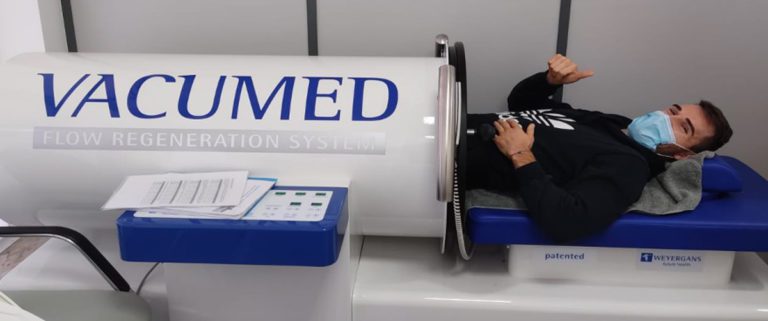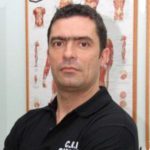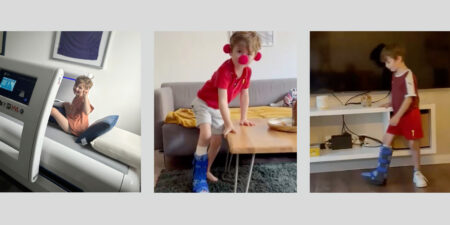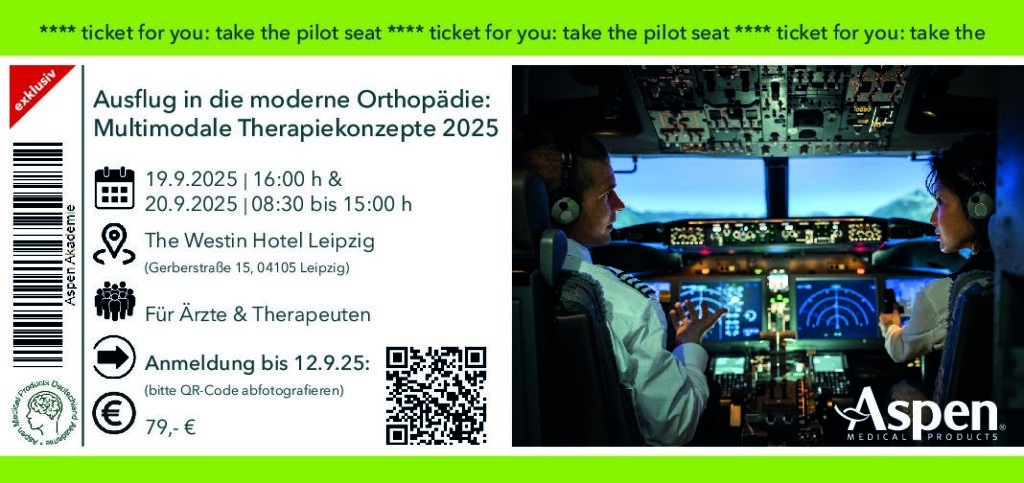Object of the investigation
The outcome of the use of intermittent vacuum therapy (IVT) with positive and negative pressure as a supplement to the conservative treatment of muscle tears.Using intermittent positive current and negative current (IVT) vacuum therapy for muscle injuries as a complement to conservative treatment in muscle tears.
Approximately 45% of injuries in professional football are due to muscle problems, resulting in approximately 33% loss of game time due to injuries. An average of 6 muscle injuries per 10 players per season on a 25-player team means approximately 15 muscle injuries per team during the season. Up to 97% affect the lower limbs, mainly the hamstring (37%), adductors (23%), quadriceps (19%), and leg muscles (13%).
Because of the heterogeneity of the lesions, and in some cases because of the internal hematomas and edema, measures to reduce peripheral swelling or vasoconstriction are particularly important.
In this article, the author presents a practical case study on the daily use of intermittent vacuum therapy (IVT) in athletes with torn muscles of various sizes in the rectus femoris muscle of the dominant leg. Conservative treatment was applied to each athlete in the initial phase, followed by clinical exercises until the final recovery phase.
APPLICATION PROCEDURE
In IVT, negative pressure (vacuum) and positive pressure are alternately applied to the lower limbs and the abdominal region in order to increase capillarization as well as venous and lymphatic return. The central nervous system is also stimulated by this technique. Since there is no direct compression, the treatment is completely painless regardless of the injury or its stage.
The main areas of application of the lower body negative pressuere device and flow regeneration system developed at the German Aerospace Center (DLR) are cardiovascular stimulation and revascularization. IVT is also recognized as a modern and economical form of treatment for lymphedema and lipedema.
The new method is also used differently to promote post-traumatic and post-operative rehabilitation (VACUSPORT device) and has been known to be very effective for traumatic sports injuries for several years.
When the vacuum pump is switched on, an alternating pressure difference consisting of negative and positive pressure is applied to the lower body in a chamber. This leads to a rhythmic capillary dilation and compression in the lower part of the body and thus optimizes the blood circulation in this area.
SAMPLE
Group of 10 athletes, divided into five comparable pairs, each with the same rupture. In each couple, one used vacuum therapy and the other did not. The cracks were (2.4 cm; 1.8 cm; 1.4 cm; 1.0 cm and 0.8 cm) long. All cracks were diagnosed by imaging, in this case ultrasound. All received the same conservative treatments, one of each couple receiving IVT daily for 45 minutes and the other not. In this way, deviations were avoided.



DISCUSSION / CONCLUSION
It took about 1.5 years to run the study until we saw athletes with the same incidence of injury to make comparisons. It has been verified that the inclusion of IVT in muscle regeneration is a benefit. This applies to the shortening of the rehabilitation time and the time saved compared to other athletes. It should be noted that the healing gains are greater, the greater the muscle injury with the associated edema. This study was carried out in a clinical context. Just like the literature, this study shows that not all bodies respond in the same way to the same stimulus. However, we need to deepen these studies and application techniques so that the evidence on the benefits of recovery with the introduction of IVT becomes an accepted reality.
Bibliography
Carazzato, J. G. (1994). Lesöes musculotendíneas e seu tratamento. Rev. Bras. Ortop, 29(10), 723–728.
Fernandes, T. L., Pedrinelli, A., & Hernandez, A. J. (2011). Lesão muscular – Fisiopatologia, diagnóstico, tratamento e apresentação clínica. Revista Brasileira de Ortopedia, 46(3), 247–255. https://doi.org/10.1590/s0102-36162011000300003
Freudenberger, C. B. (1943). Muscle physiology. Journal of the American Medical Association, 121(10), 784. https://doi.org/10.1001/jama.1943.02840100070028
Middleton, S. W. F., & Smith, J. E. (2007). Muscle injuries. Trauma, 9(1), 5–11. https://doi.org/10.1177/1460408607081918
Monsanto, J., Tomás, N., Andrade, M., Barbosa, J., & Ângelo, C. (2019). Abordagem da Lesão
Muscular: Fases de Cicatrização, Tratamento Conservador e Opções Terapêuticas. Revista Da SPMFR, 31(3), 31–36.
Oliveira, P. (2016). Padrões e Incidência de Lesão: estudo de caso na equipa de futebol profissional do Clube Desportivo Feirense, 1–100.
Passos, E. F. dos. (2007). Lesões Musculares no Futebol. Faculdade de Desporto Da Universidade Do Porto, 1–106.
Physical activity guidelines for Americans. (2008). The Oklahoma Nurse, 53(4), 25. https://doi.org/10.1249/fit.0000000000000472 Ft. Vitor Pimenta
Autoren
PROFESSIONAL EXPERIENCE
659 Games in First League Soccer Portugal
2020/2021
Physiotherapist / Physical Recuperator at Varzim S.C.
2015-2020
Physiotherapist / Physical Recuperator at C.D. Aves
2004–2019
Physiotherapy Technician / Physical Recuperator
Centro de Recuperação Física Pimas, Lda - Trav. Dr. António Ramos de Almeida, 58 -
Vila do Conde www.crfpimas.pt
2015/2016
Physiotherapist in Real Madrid
2013-2015
Physical Recuperator/ Physiotherapy at Varzim S.C Varzim Sport Club Stadium –




